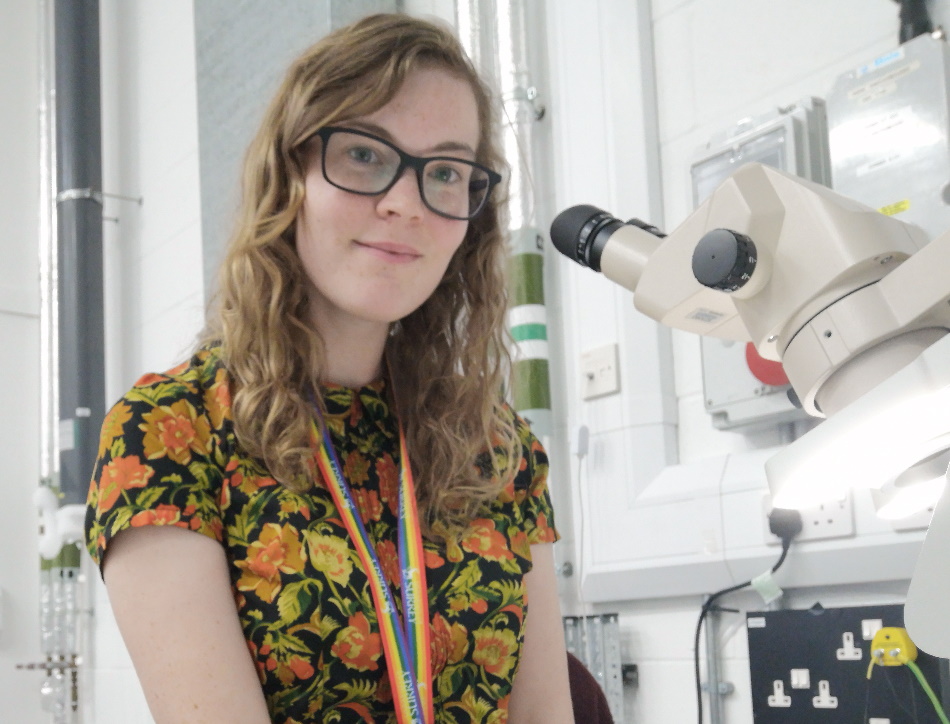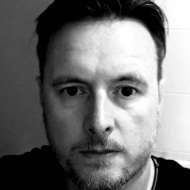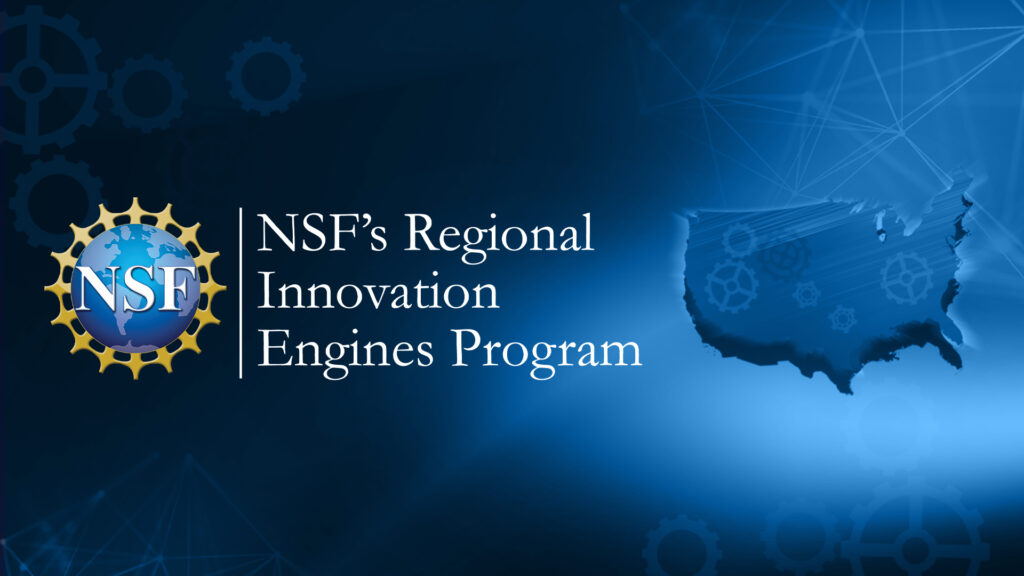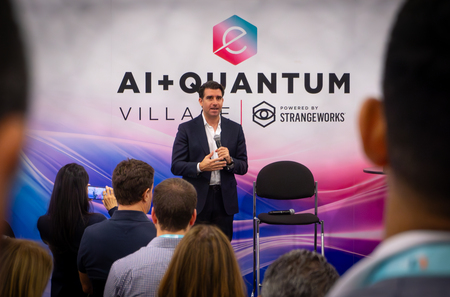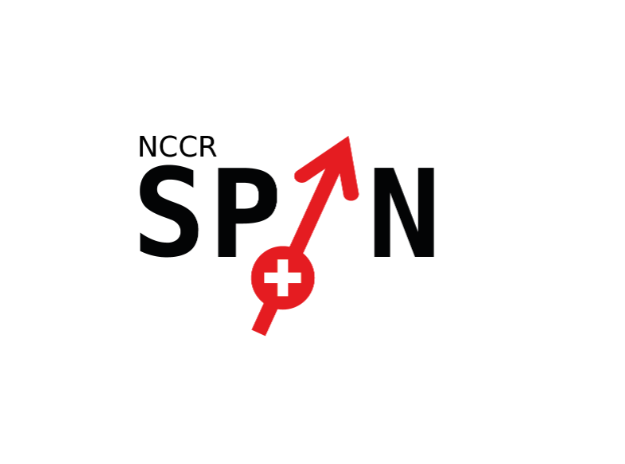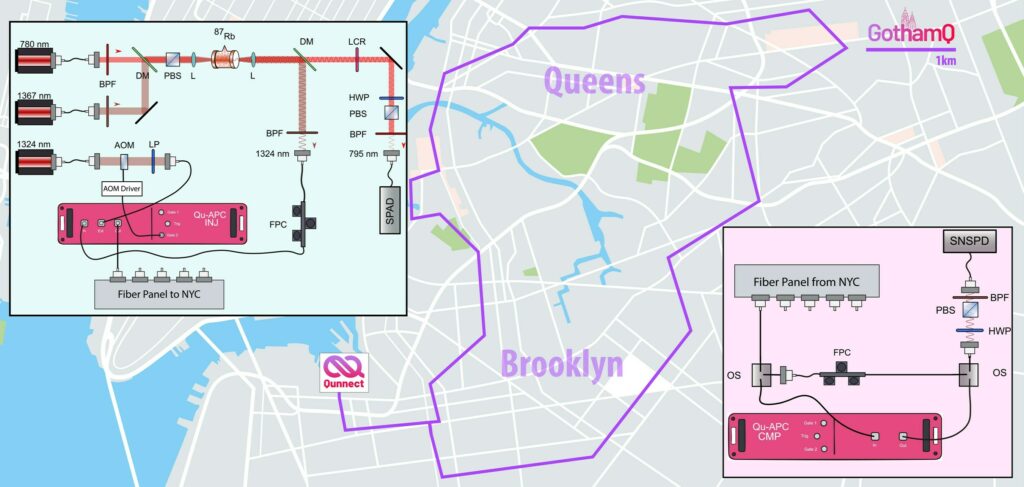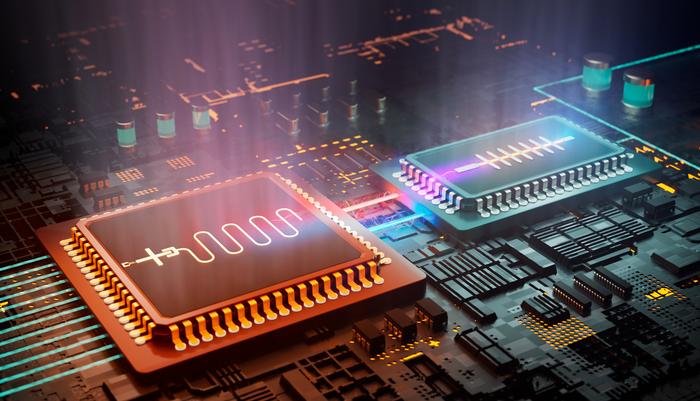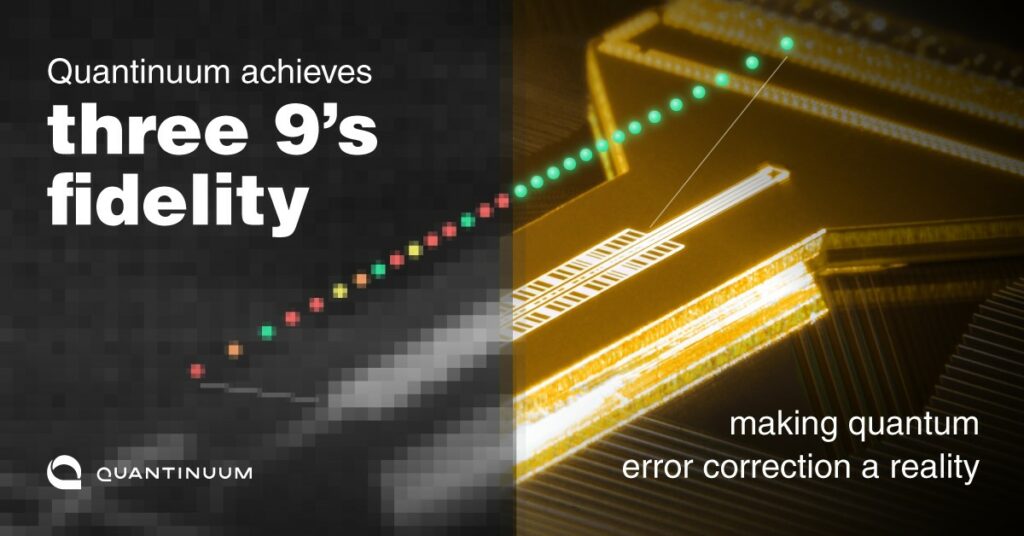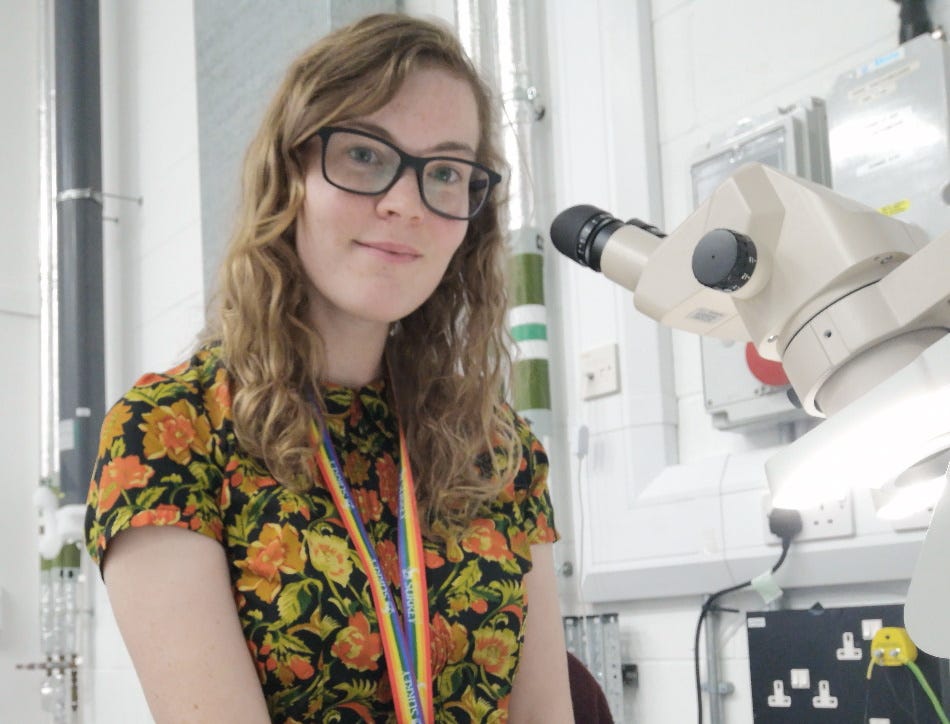
Important Voices
In an industry dominated by men, it’s refreshing to hear stories about amazing women in the quantum computing (QC) community. Features like our own 12 Women Pioneering The World Of Quantum Computing and Establishing a Women Inclusive Future in Quantum Computing by Adilin Beatrice published in Analytics Insight are a start.
But articles are not enough. That’s why organizations and events have come about to highlight the problem: popular use cases for this are the professional network Women in Quantum Development (WIQD) and my particular favourite, the Women In Quantum series of summits, founded by the VP for business development at IonQ, Denise Ruffner
Another woman whose efforts are focused on popularizing all things quantum is an experimental physicist and science communicator Daisy Shearer. A Ph.D. candidate in experimental physics at the University of Surrey’s Advanced Technology Institute, Shearer’s research focuses on semiconductor spintronics for quantum technology applications while also having a keen interest in the recent developments and history of quantum technology, quantum computing (QC), semiconductor lasers, nanophotonics, and telecommunications.
Daisy Shearer: Finding Physics & Working Through Challenges
Shearer can boast of her own website and an excellent YouTube channel where she muses about physics, quantum technology, her life as an academic, and books, though, more importantly maybe, she discusses autism, disability, and mental health issues.
Having watched all Shearer’s YouTube videos and read the interviews and profiles about her, I was intrigued to find out more.
I contacted her directly in the hope of being granted an interview, which she duly accepted.
TQD: “First of all, can you tell me how you became an experimental physicist?”
Shearer: “By the time I was around 15, I knew that I wanted to do a physics degree at university. Science had always been a big interest of mine and I decided on physics when I realised that it underpins the other sciences. I’m the kind of person who really likes going deep into a topic and exploring the fundamentals of things. Plus, I got to use mathematics a lot to explore the way things work in the world around me. It was around this age that I became rather fascinated with everything to do with electron spin and quantum mechanics. I read lots online as well as popular science books on the topic of quantum physics during high school. It’s not really that surprising that I ended up in the field of semiconductor spintronics given this interest!”
“So, I applied to do a physics degree after high-school and went to the University of Surrey (my first choice of university, despite its slightly lower grade requirements), eventually ending up on their 4-year integrated masters physics degree (MPhys). I was initially put onto the BSc in physics, but moved to the MPhys at the end of second year as I had a high enough average yearly grade to do so (you can read a bit more about my educational journey in more detail in this blog post of mine which you’re welcome to use info from). The university particularly appealed to me as it has a heavy emphasis on getting real-world experience through a placement year in industry or an academic lab. I was also very interested in the interdisciplinary research that they were doing in the Advanced Technology Institute (ATI), which is where I work now as a postgraduate researcher.”

“When I applied for my degree, I purposefully picked the most flexible route — ‘Physics’ — as this would give me the most flexibility with choosing optional modules. When I went in, I was open to trying out lots of different areas of physics to see what most interested me, so this allowed me to do just that. By my second year, I’d discovered that I had a clear bias for modules involving solid-state physics, quantum physics, optics, nanophotonics, semiconductor physics, and other quantum technology-related courses. In fact, I ended up taking all of the courses you needed for the ‘physics with quantum technologies’ MPhys degree route in the end.”
“The other thing I discovered during my degree was that I loved doing experimental work and that I was rather good at it. I was one of the few students in my cohort who actively looked forward to labs and I would always choose a lab-based coursework option over computational if I could (although I do enjoy computational work too from time to time). I was the student who other students would go to in labs to help set up their equipment if they couldn’t find a demonstrator. Experiments were so much more tangible to me than anything else. I found that I loved linking the more abstract theory we learned in lectures to a physical experiment and observing physics right in front of me — especially when it was related to quantum mechanics.”
“Once I had discovered that I enjoyed experimental work, I knew that experimental research was primarily wanted to do as a career. In our third year, we had our placements where we were also doing remote modules and writing a master’s dissertation based on the research we did during our placements. I applied for an internship at the Centre for Integrated Photonics where I worked on R&D of semiconductor lasers (specifically, electroabsorption modulated lasers) for long-haul telecommunications. I got to do a lot of work characterising the devices and simulating various failure modes as well as understanding the quantum mechanics behind them (I did a lot of work on the Quantum Confined Stark Effect) to improve our laser designs. The mixture of working with physics theory and carrying out experiments as well as working closely with engineers was the perfect mix for me. Some of my colleagues from my time there encouraged me to apply for a Ph.D. in quantum technologies after my degree. I think that without their encouragement I might have been too hesitant about my abilities to even apply for a doctoral programme.”
“In the final semester of my degree, I applied for several quantum technologies-focused PhDs. I ended up taking the one at Surrey, based at the ATI, because it had the most interesting subject matter and seemed to have the most flexibility so I could take the project where I wanted to. I’m currently researching a material called InSb, which is a III-V semiconductor and it’s particularly interesting as it’s very strongly spin-orbit coupled. This gives it interesting properties and the potential to produce highly spin-polarised currents which can be used for spin injection into all sorts of quantum technologies. My work right now also involves developing rapid prototyping techniques using focused ion beam lithography and nanomachining. I’ve been looking at creating quantum wires and quantum point contacts from InSb-based quantum wells as a step towards highly efficient spin-polarising devices. I’m also interested in the potential of III-V semiconductor heterostructures like those that I study for hybridization into current electronics and with superconductors — the latter could have exciting implications for the development of topological quantum computing using Majorana Zero Modes. I think that from a commercialisation perspective, it might be an interesting route to explore for topological quantum computing hardware architectures. That’s pretty much where I’m at today! I get to do research every day on a subject I’m passionate about and think deeply about how we can harness quantum mechanics to make the world a better place.”
TQD: “You have ASD, how has this helped/harmed you in your academic career to date?”
Shearer: “I was diagnosed with autism spectrum disorder back in 2017 when I was 21. It was actually towards the end of my internship that I had my diagnostic assessment and diagnosis. By the time I was diagnosed, it was the final semester of my MPhys degree and I only got reasonable adjustments in examinations for that semester (I was allowed to be in a smaller room for exams to reduce some of the sensory overload that I experience in large exam halls full of lots of people). So, for most of my life, I was undiagnosed which comes along with many challenges given that I didn’t have appropriate support.
Having a different neurotype to most of the population comes along with its strengths and its challenges. It certainly is very disabling at times. Navigating a world designed for the neurotypical brain and communication is hard. I’m always having to make decisions about whether to disclose my autism to colleagues and then have to expend energy self-advocating and educating people about my communication, cognitive processing, and sensory differences. But luckily, my university has been great at putting in place reasonable adjustments to try and combat some of the challenges, particularly sensory ones. As long as colleagues I’m collaborating with are happy to be flexible in how we communicate and understand that I can’t always talk verbally then it doesn’t really impact me too much. Not everyone is understanding of me but that’s okay. I do experience autistic meltdowns or shutdowns from time to time which are probably one of the most disabling aspects of being autistic, but over time I am finding ways to manage this — reasonable adjustments help a lot!”
“I’d say that most of my challenges come with independent living and managing energy rather than in my job specifically. But when I’m having trouble caring for myself, this can have a knock-on effect to my work. I do worry that I will encounter some challenges around getting a job after my Ph.D. Interviews are notoriously challenging for neurodivergent individuals and even with disclosure upfront and potential adjustments in the interview (e.g. it being in a room with few sensory distractions to avoid sensory overwhelm), people have unconscious biases and may not want to do the extra ‘work’ associated with accommodating for disabled people like myself.”
“On the flip side, I do think that being autistic is part of why I am a good scientist. Traits like attention to detail, systematic thinking, out-of-the-box thinking, making connections where others don’t, pattern-seeking, creativity, and ability to intensely focus on a subject of interest (known as ‘hyperfocus’_ are thought to be associated with the autistic neurotype. So, if I wasn’t autistic, maybe these traits wouldn’t be as present in my personality. I think that more and more, employers are recognising the strengths of neurodivergent minds and acknowledging that diversity of thought helps us do better research — and that includes neurodiversity.”
TQD: “Do you think women are fairly represented in the STEM subjects, both in academic and industry?”
Shearer: “Certainly, growing up I did not have any female role models in the physical sciences. When I look at the research group I’m in at the moment, there are more men than women and I do feel I stick out a bit because of my gender. I think taking STEM as a whole, some subjects are becoming more equitable, but in PECS (physics, engineering, and computer science) subjects the gap is quite still significant (see this paper for more: https://science.sciencemag.org/content/368/6497/1317). I think that this is pervasive across academia and industry, but I’m also encouraged to see that this issue is being talked about quite widely. I’m optimistic that we are moving in the right direction regarding breaking gender stereotypes and encouraging people to pursue the subjects they enjoy without fear of discrimination on the grounds of gender.”
TQD: “You focus on semiconductor spintronics devices for quantum technology and metrology applications. Can you explain that for the laymen amongst us?”
Shearer: “Sure! So, semiconductor spintronics is a subfield of spintronics which is a portmanteau of ‘spin transport electronics’. This means that we study a property called the intrinsic spin of electrons within different solid-state materials as well as investigating things like spin-orbit interaction and electron magnetic moments. The aim of spintronics is to understand electron spin and to control it. The idea is that if we can control spin as well as electronic charge, then we can encode a lot more information within a single electron in a circuit as it gives us an extra degree of freedom to play with and the quantum mechanical nature of spin means that we can (in theory) put it into a superposition of states (amongst other tricks).”

“My focus is on semiconductors which are a class of material that makes up most of the computer chips used these days (transistors can easily be made using these materials). Semiconductors are materials whose conductance characteristics lie somewhere between a conductor and insulator. Specifically, I’m interested in a certain semiconductor — InSb — which has some interesting properties like an incredibly large spin-orbit interaction that make it well suited to spintronics. I’m particularly interested in understanding a phenomenon known as the Rashba interaction and using this to produce a ‘spin-polarized current’. This is when a current of electrons are all in one spin state and it’s easier said than done as spin is quantum mechanical so the states often decohere very quickly (aka. the states are quickly destroyed as the electron moves through a material).
Producing spin-polarized currents in various materials is one of the main focuses of spintronics research at the moment. It’s these currents that can enable us to make new quantum technologies. Quantum technologies are devices which utilise quantum mechanical phenomena in their functioning. The most obvious example of this is quantum computing, but the field is broader than that and includes technology like quantum cryptography, quantum sensors and quantum metrology, the latter of which consists of creating extremely sensitive measuring devices using quantum phenomena. An example of how a spin-polarized current could be used in quantum computing is for initializing the initial state of an electron spin qubit.”
TQD: “What is the future of quantum computers? Can they change the world for the better?”
Shearer: “I think that commercial quantum computers are still a long, long way off. I tend to try and be pragmatic about it rather than falling into the hype (of which there is a lot at the moment around quantum computing!). The field of quantum computing and information is still relatively young and very much in the research stages, so there’s a long way to go. I’d like to think that we are making progress towards useful quantum computers, but that’s a long way in the future. One thing I’d like to see is more hardware architectures getting funding (not just superconducting qubits). As I mentioned, I’m particularly interested in the potential for topological quantum computing given its potential resilience to decoherence. There are a lot of challenges still to overcome in the field. Some that come to mind include needing cryogenic temperatures to operate qubits, qubit fidelity, error correction, and reliable initialization and readout of qubits. These are not trivial challenges, but I think that we will overcome them in time and through investigating creative solutions.”
“For sure. The potential for improving scientific research and other facets of life that would come from large-scale quantum computers is undeniable.”
TQD: “What do you hope to do after your Ph.D.?”
Shearer: “I’d like to continue doing experimental physics research in the quantum technology field. Ideally, I’d like to work with industry as well as doing some teaching, but I don’t really have my sights set on becoming an academic. I’d rather do the occasional guest lecturing and develop online teaching resources that are accessible, free and available to all. In addition, I will definitely be continuing to do more science communication and writing. I’m hoping to be able to dedicate more time to my blog and freelance writing once I’ve completed my Ph.D.
TQD: “You’re also a science writer — how difficult is it to communicate scientific (quantum) concepts in simpler form? Is it a gift?”
Shearer: “I’m still very much a novice when it comes to science writing and I think it’s a skill that needs lots of practice to develop. As I said, I’m hoping to do more science writing after I’ve completed my Ph.D., so I hope that my science communication improves with more practice. It can be very challenging to convey complex topics like those in quantum physics to a lay audience. But equally, it really helps me to consolidate my own understanding by conveying it to others. Currently, I tend to write for a science-savvy audience rather than a broader audience and I don’t shy away from using jargon as long as I explain each word when I first use it. Quantum physics tends to be oversimplified when communicated to the public, so I do think it’s important not to skim over important details and nuances that can be lost when this is done. In the future, I’m very interested in exploring different ways of communicating science concepts and incorporating things like illustrations and schematics to accompany and enhance my writing.”
TQD: Thank you for your time, Daisy.


